May 28 - June 1
5 June 2016 · Arjan Dwarshuis · 5344 × bekeken
http://www.arjandwarshuis.com/#biggestyear
http://world.observation.org/arjan.php
PLEASE MAKE A DONATION NOW!
May 28th A FLAMING START IN SOUTH AFRICA
After clearing customs upon arrival in Johannesburg I finally saw my girlfriend Camilla again, who joins me for the coming three weeks in South Africa. Also there were Ethan Kistler and his girlfriend Billy Krochuk, they would show us around in this fantastic country and since Ethan is a guide for Birding Africa we were in the most capable hands imaginable.
We had no time to waste, it was already 4 PM and we still had to pick up our rental car and drive straight to Suikerbosrand Nature Reserve where Errol De Beer, Mathew Axelrod, Jonathan Syke – 3 local birders from Joburg were already waiting for us. We had two big targets, Orange River Francolin and African Grass-owl.
We finally arrived just as the sun was about to set behind the horizon, but luckily the guys had already found an unexpected bonus staked out for us, a fantastic Pink-billed Lark right on the middle of the road. Next we drove quickly to an area of shorter grassland where we played the call of Orange River Francolin and as luck will have it two birds immediately responded. Moments later we were looking at a pair of these game birds that peeked their heads through the grass.
Luckily our next target was a night bird since it was quickly getting dark. We tried several spots for the Grass-owl, but all we could find were 4 very showy Marsh Owls. Eventually, at our last try, we had a fantastic African Grass-owl flying right over our heads, fantastic!
After having dinner with Errol, Mathew and Jonathan we said goodbye and headed for Zaagkuilsdrift Bird Sanctuary and lodge, who had kindly sponsored us a free night at this absolutely fantastic place. The entrance road to the lodge goes through very productive Acacia savannah, which is one of the best spots to try for Southern White-faced Owl and at our third roadside stop we got a response and even saw 2 birds. What a great end to our first couple of hours in South Africa!
May 29th POLOKWANE PARTY
After a fantastic breakfast at Zaagkuilsdrift Lodge we started birding around the premises, our target here was Southern Pied Babbler. I was preparing for quite some searching, but literally the first birds we saw was a family of 6 of these stunning black-and-white birds.
We then drove up to Polokwane Game Reserve, where we were met at the gate by Joe Grosel, one of the best local birdwatchers around and like Ethan he is a guide for Birding Africa.
Polokwane has a good number of Kalahari specialties that reach the westernmost point of their distribution here and with Joe we headed into the park to track them down.
We started with the most important one, the vulnerable Short-clawed Lark, a sometimes tricky to find and range-restricted bird that has its stronghold in Polokwane. Luckily we had Joe because we quickly found this elegant looking lark and hence we made short work of Tinkling Cisticola as well.
By the end of the day we had found most of the specialties including Ashy Tit, Burnt-necked Eremomela, Great Sparrow and the endangered Cape Vulture. Like all vultures in Africa this beautiful bird of prey's population is decreasing at an alarming rate. The cause for this decline is intentional poisoning of carcasses by poachers – they basically want to kill the messenger. Additionally dried heads of vultures are still widely used in black magic practices to ‘look into the future’.
Luckily there is still hope for Africa’s vultures, but your help is much needed. Birdlife Africa has started a campaign called #lovevultures. Support this campagne at www.birdlife.org/savevultures and help save these majestic birds from extinction.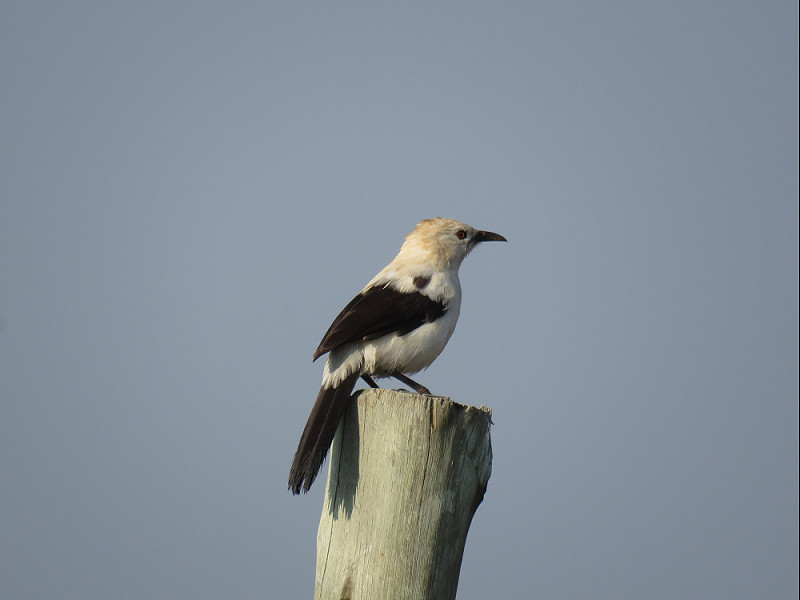 Southern Pied Babbler Turdoides bicolor (Arjan Dwarshuis)
Southern Pied Babbler Turdoides bicolor (Arjan Dwarshuis)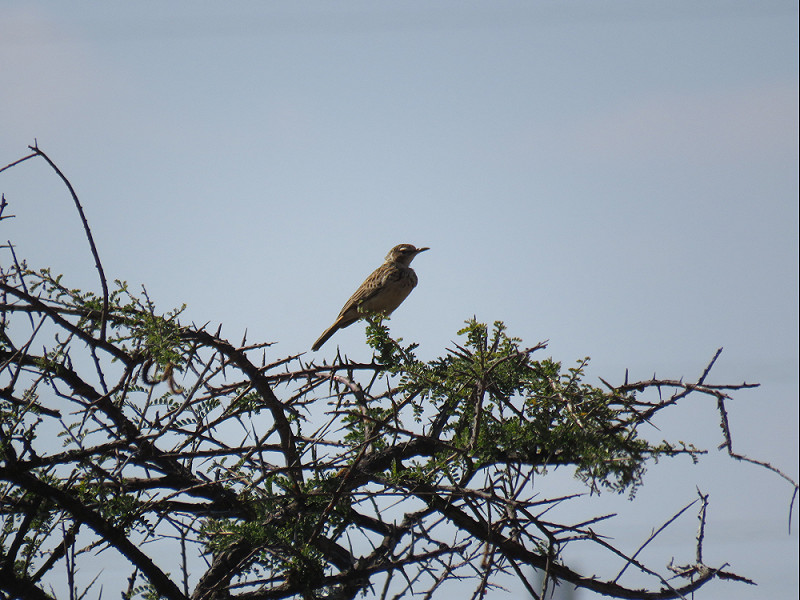 Short-clawed Lark Certhilauda chuana (Arjan Dwarshuis)
Short-clawed Lark Certhilauda chuana (Arjan Dwarshuis)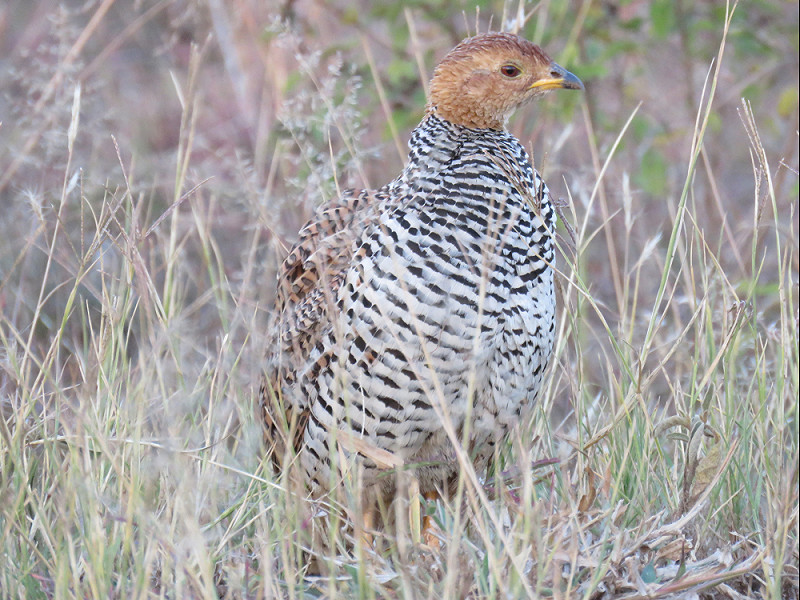 Coqui Francolin Peliperdix coqui (Arjan Dwarshuis)
Coqui Francolin Peliperdix coqui (Arjan Dwarshuis)
May 30th TO KRUGER
Today would be a minor day for me, but a big day for Camilla as we were heading for Kruger, home to the Big 5, over 10 species of antelopes and of course a lot of bird species, all new for her.
We started with 3 hours of birding in Polokwane, looking for the five targets that were still missing. The first one was readily found right at the gate, the striking Red-headed Finch. We knew all the others were tricky, but after some persuasion we eventually found Short-toed Rock-thrush and a great find by Ethan was a nice male Straw-tailed Whydah. I guess I have to come back another time for Burchel’s Sandgrouse…
We made one stop on our way to Kruger in a quiet suburban neighborhood, where we found the scarce Magpie Mannikin.
Finally we were in Kruger and soon we stumbled upon Camilla’s first African Elephant, Giraffes and Buffalos, naturally a fantastic experience when you’ve never been to Africa before. I also managed to find some new ones for the year, including a cracking pair of Double-banded Sandgrouses.
That evening we had a night drive in Kruger NP, which as always was exciting. This time we came across a huge Verraux’s Eagle Owl blinking at us with its pink eyelids.
We set up tents at the Satara Campsite ready for our game drive tomorrow!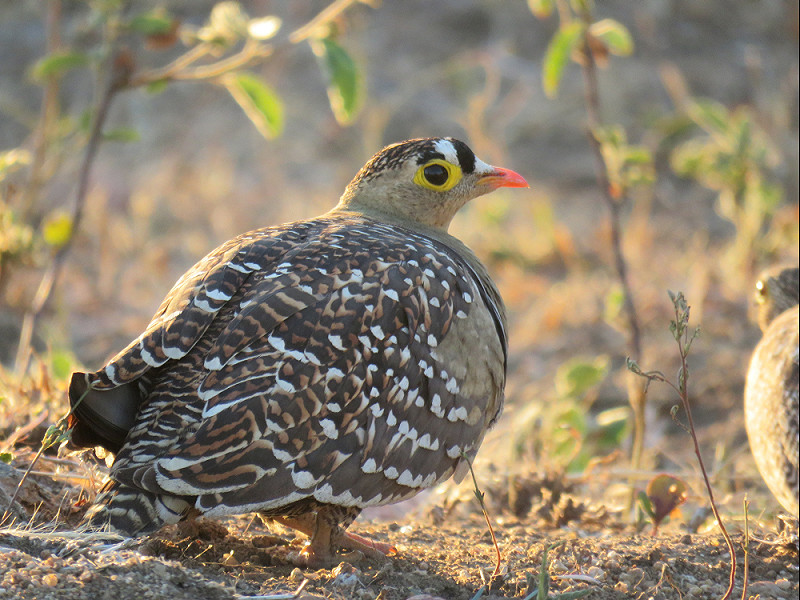 Double-banded Sandgrouse Pterocles bicinctus (Arjan Dwarshuis)
Double-banded Sandgrouse Pterocles bicinctus (Arjan Dwarshuis)
May 31th THE HONEY BADGER
As we left Satara and headed north towards Olifants River, Billy suddenly yelled ‘stop’! At first she couldn’t exactly explain what she was seeing since she was simply too excited, but there, barely 10 meters away from us, was a Honey Badger!
Honey Badgers are impressive animals of Sub-Saharan Africa, but although widespread, they are rarely observed. These black-and-white carnivores are amongst the toughest animals on the African Savannah and despite their size of a small dog they take on Lions and Leopards without hesitation. Moreover, a Leopard would rather take a side track than confronting a Badger heads on. In addition these opportunistic mammals are very handsome and rarely sit still, being almost continuously on the lookout for food.
We watched this fantastic animal for 15 minutes or so, actively foraging right next to our car, making this one of the best mammal sightings of my whole year. All the Elephants, Lions and Rhinos combined couldn’t beat this charismatic beast!
After this superb sighting it was slow going, but a great find by Billy was my – so far – only Greater Painted Snipe this year. From Satara we drove south towards Skukuza, where we set up camp. Despite seeing many exciting birds en route,no new ones were involved. You know that you’ve covered East Africa well when in a park like Kruger – home to over 500 species of bird – you have no more than 3 potential year ticks left…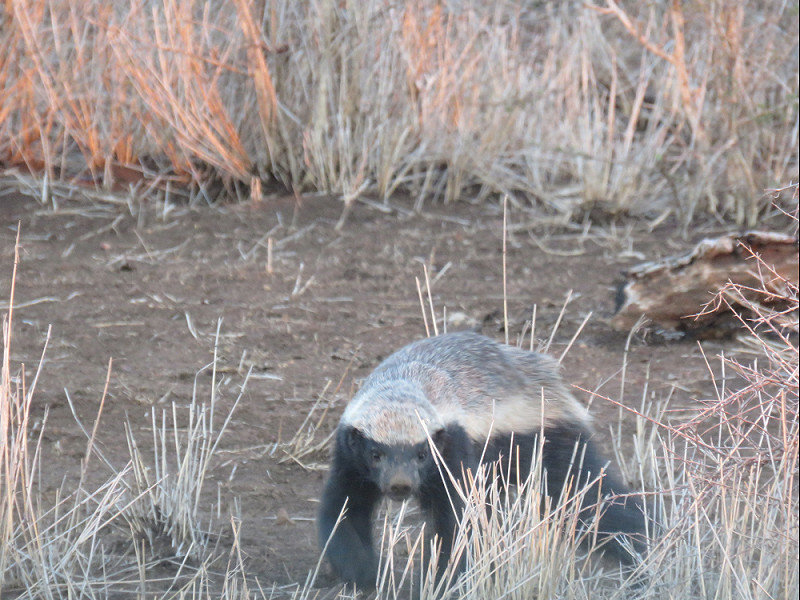 Honey Badger Mellivora capensis (Arjan Dwarshuis)
Honey Badger Mellivora capensis (Arjan Dwarshuis)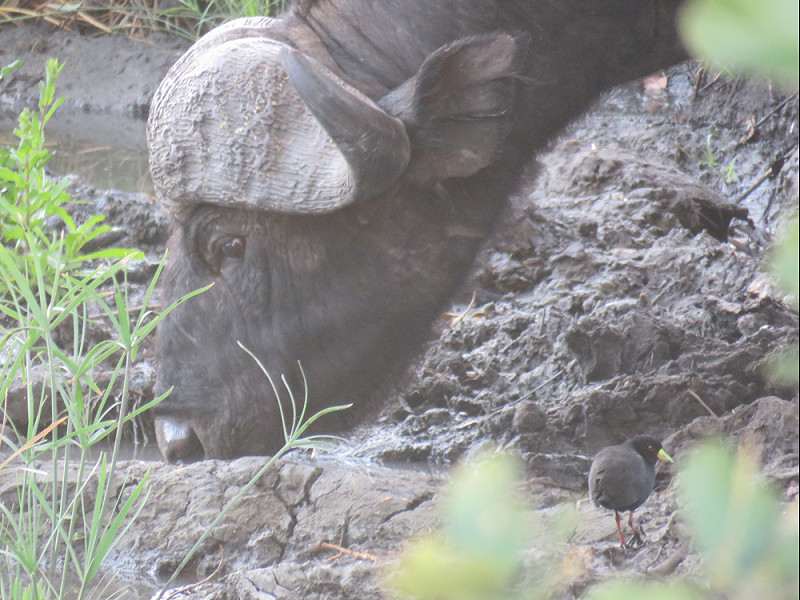 Black Crake Amaurornis flavirostra (Arjan Dwarshuis)
Black Crake Amaurornis flavirostra (Arjan Dwarshuis)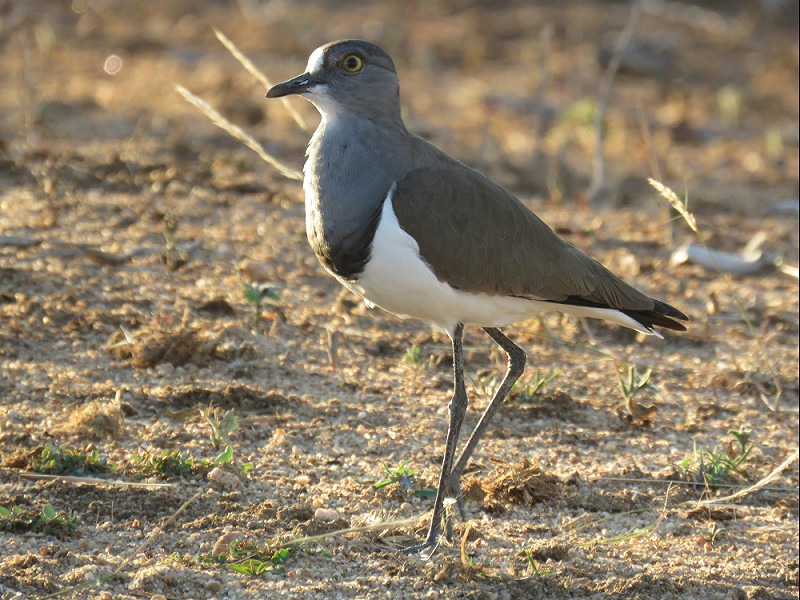 Senegal Lapwing Vanellus lugubris (Arjan Dwarshuis)
Senegal Lapwing Vanellus lugubris (Arjan Dwarshuis)
June 1st A THRILLING 15 MINUTES
At 6 AM we had packed our tents and drove through the gates of Skukuza. We wanted to be first on a bridge 13 km from the camp to look for African Finfoot.
Upon arrival at the bridge we couldn’t locate any Finfoot, despite seemingly perfect conditions, but a much better find from a Biggest Year perspective was a pair of the uncommon White-crowned Lapwing.
Than it happened, barely 5 minutes after finding the Lapwings we had a fantastic sighting of a family of Cape Clawless Otters. Like the Honey Bager the former day, this is another of those not so commonly observed small carnivores. Suddenly I picked up a movement behind the Otters, the unmistakable shape of a big cat! It turned out to be a Leopard slowly crossing the riverbank! Best was that we had this beautiful cat all for ourselves :)
We spent the rest of the day driving southwest through Kruger and from there to Wakkerstroom, one of the most amazing birding sites in Southern Africa. En route we focused entirely on finding Bennett’s Woodpecker, one of the last species I was still missing in the Kruger biome. After trying at several different locations and admirable persistence by Ethan we found a nice male of this striking Woodpecker.
Arjan Dwarshuis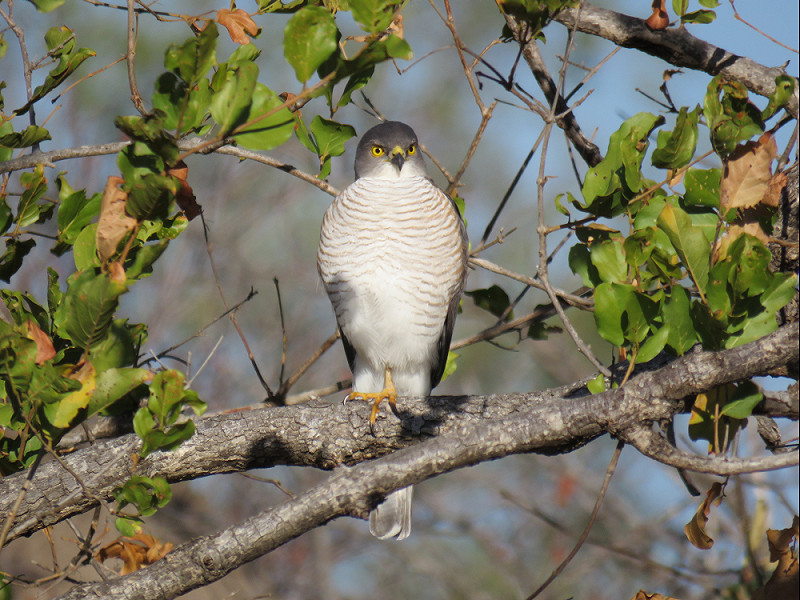 Little Sparrowhawk Accipiter minullus (Arjan Dwarshuis)
Little Sparrowhawk Accipiter minullus (Arjan Dwarshuis)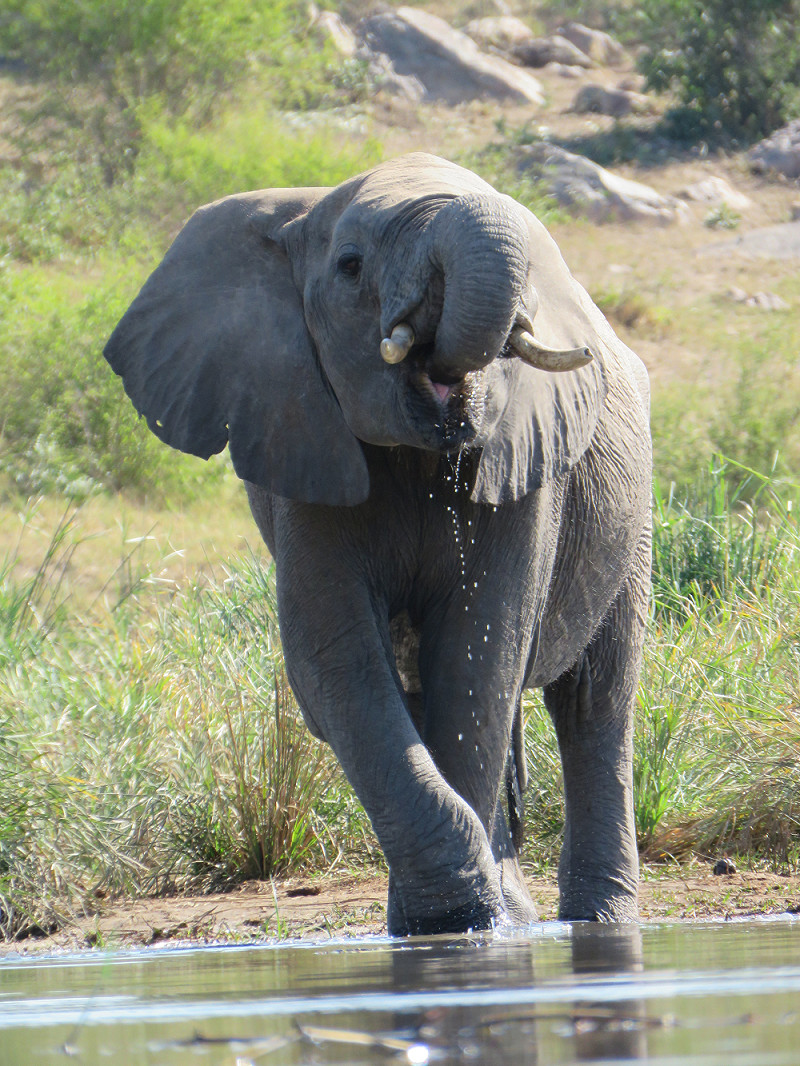 Savanna Elepehant Loxodonta africana (Arjan Dwarshuis)
Savanna Elepehant Loxodonta africana (Arjan Dwarshuis)
http://www.arjandwarshuis.com/#biggestyear
http://world.observation.org/arjan.php
PLEASE MAKE A DONATION NOW!

